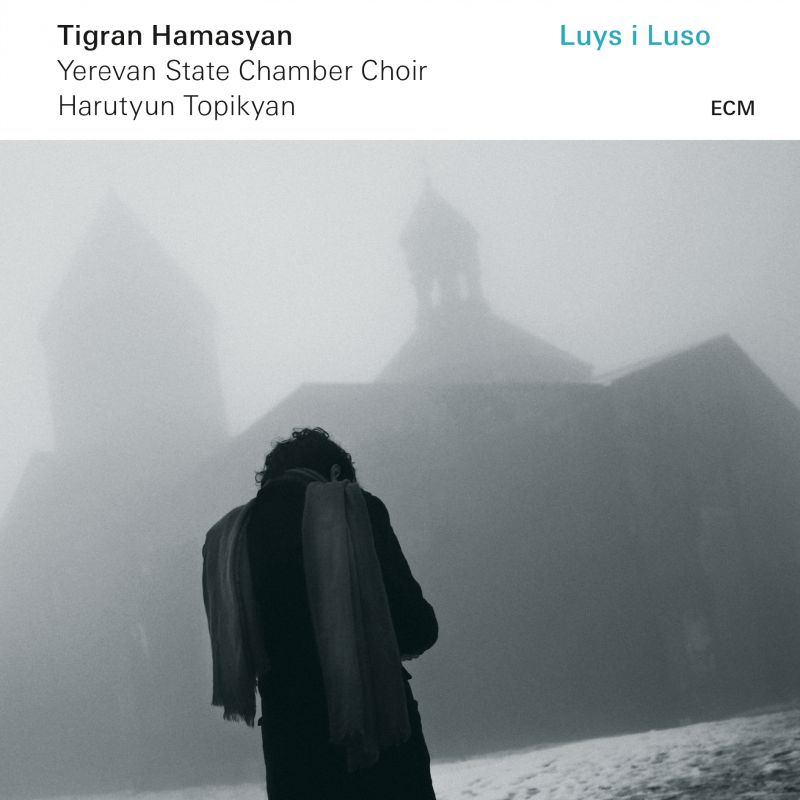- Mar 26, 2021
- 769
- 491
- 33
- Country
- United Kingdom
- Faith
- Christian
- Marital Status
- Single
I've been a longtime admirer of Tigran's music. Some really gorgeous undulating lines and polyrhythmic chicanery. He's one of the more innovative fusion artists out there at the moment. I was aware of his Armenian heritage, but only just found out about the album luys I Luso.
It's an ECM issue, and has the dreamy sense of infinite reverb and echo. I'm discussing it here because he draws on sacred music from the Aremnian Orthodox church. (this one's for you @The Liturgist)
No. Title Length
1. "Ov Zarmanali" (English: O Amazing Mystery.[29] - Komitas) 1:26
2. "Ankanim Araji Qo" (English: I Kneel Before You - Mesrop Mashtots) 5:09
3. "Ov Zarmanali (Var. 1)" 13:10
4. "Hayrapetakan Maghterg" (English: Patriarchal Ode - Komitas) 3:52
5. "Bazum En Qo Gtutyunqd" (English: Your Mercy Is Boundless - Mesrop Mashtots[30]) 6:43
6. "Nor Tsaghik" (English: New Flower - Nerses Shnorhali) 7:38
7. "Hayrapetakan Maghterg (Var. 1)" 1:45
8. "Hayrapetakan Maghterg (Var. 2)" 4:26
9. "Havoun Havoun" (English: The Bird, The Bird was Awake - Grigor Narekatsi) 4:35
10. "Voghormea Indz Astvats" (English: God, Have Mercy upon Me - Mesrop Mashtots[29][dead link][31]) 9:34
11. "Sirt Im Sasani" (English: My Heart is Trembling! - Komitas) 3:46
12. "Surb Astvats" (English: Holy God - Komitas) 5:46
13. "Sirt Im Sasani (Var. 1)" 4:04
14. "Orhnyal E Astvats" (English: Blessed is God - Komitas) 4:10
Total length: 76:04
I'm going to spend an evening on the album. My impression thus far after listening to Ov Zarmanali is that this is transcendent stuff. It's lush and broad and ecstatic. Tigran's playing is quietly intense.I don't get the impression that I'm listening to a crossover album. It has self-possession and inner integrity. Highly recommended.
ECM Records
Anuone into Tigran? What are your thoughts about this album?

It's an ECM issue, and has the dreamy sense of infinite reverb and echo. I'm discussing it here because he draws on sacred music from the Aremnian Orthodox church. (this one's for you @The Liturgist)
No. Title Length
1. "Ov Zarmanali" (English: O Amazing Mystery.[29] - Komitas) 1:26
2. "Ankanim Araji Qo" (English: I Kneel Before You - Mesrop Mashtots) 5:09
3. "Ov Zarmanali (Var. 1)" 13:10
4. "Hayrapetakan Maghterg" (English: Patriarchal Ode - Komitas) 3:52
5. "Bazum En Qo Gtutyunqd" (English: Your Mercy Is Boundless - Mesrop Mashtots[30]) 6:43
6. "Nor Tsaghik" (English: New Flower - Nerses Shnorhali) 7:38
7. "Hayrapetakan Maghterg (Var. 1)" 1:45
8. "Hayrapetakan Maghterg (Var. 2)" 4:26
9. "Havoun Havoun" (English: The Bird, The Bird was Awake - Grigor Narekatsi) 4:35
10. "Voghormea Indz Astvats" (English: God, Have Mercy upon Me - Mesrop Mashtots[29][dead link][31]) 9:34
11. "Sirt Im Sasani" (English: My Heart is Trembling! - Komitas) 3:46
12. "Surb Astvats" (English: Holy God - Komitas) 5:46
13. "Sirt Im Sasani (Var. 1)" 4:04
14. "Orhnyal E Astvats" (English: Blessed is God - Komitas) 4:10
Total length: 76:04
I'm going to spend an evening on the album. My impression thus far after listening to Ov Zarmanali is that this is transcendent stuff. It's lush and broad and ecstatic. Tigran's playing is quietly intense.I don't get the impression that I'm listening to a crossover album. It has self-possession and inner integrity. Highly recommended.
ECM Records
Anuone into Tigran? What are your thoughts about this album?

Last edited:
